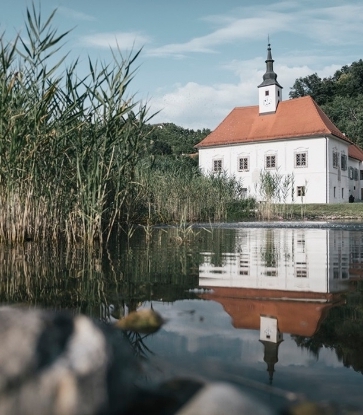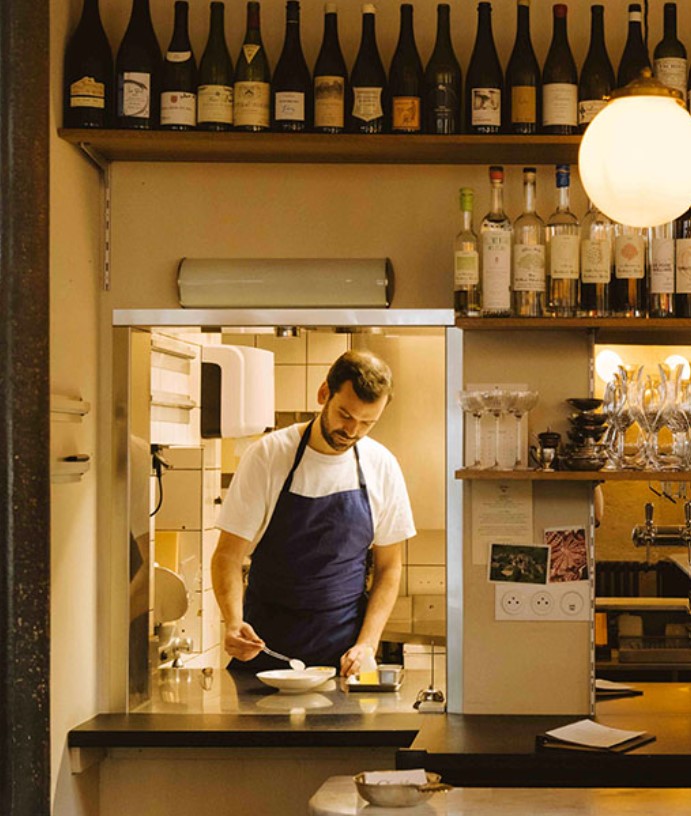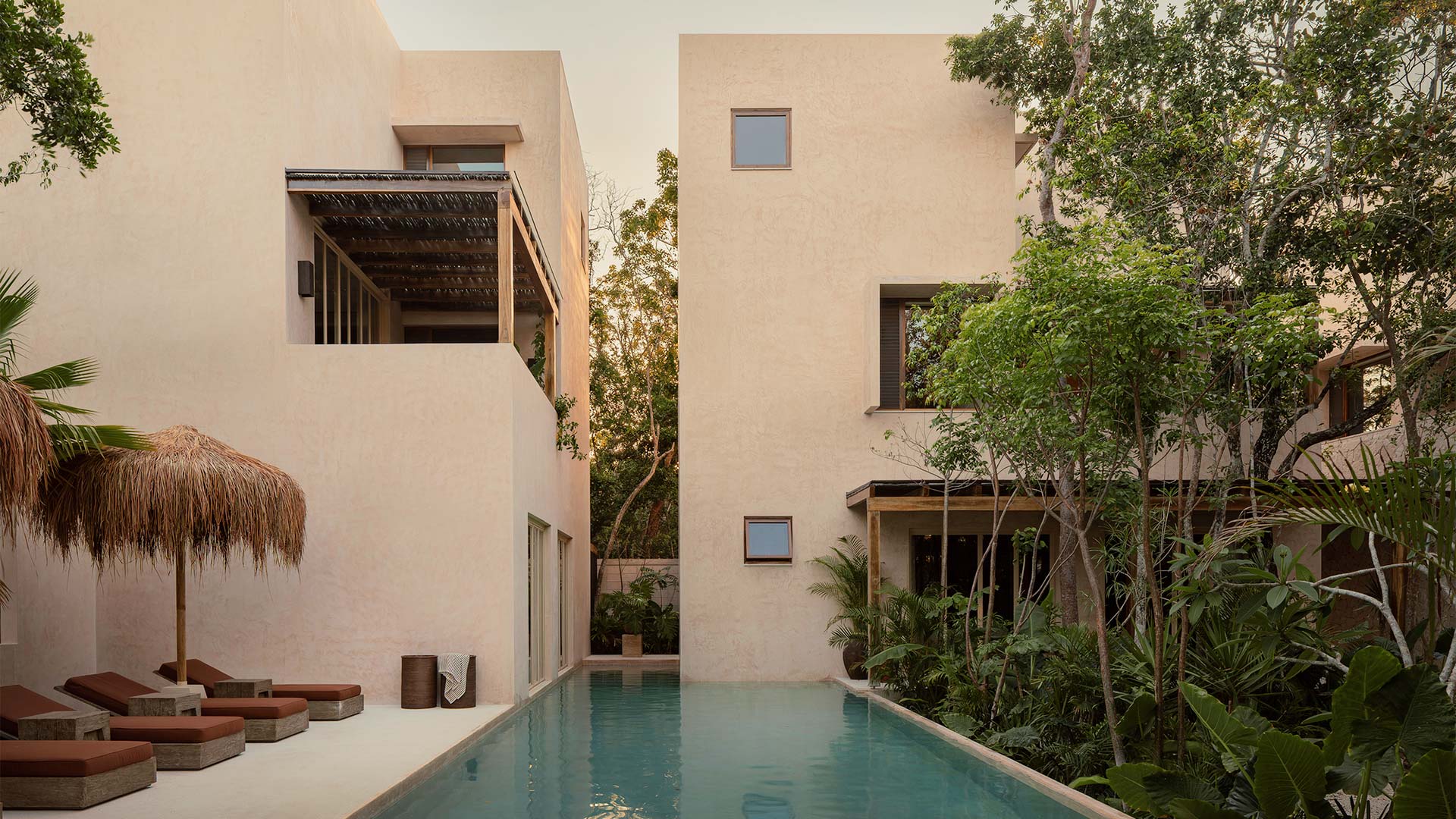Baba au rhum is still a firm favourite in French gastronomy. Its springy texture and rich taste of rum may not be to everyone's liking, but the dessert remains so popular in France that it is a mainstay on restaurant menus across the country. With that in mind, we’ve tasked a MICHELIN Guide Inspector with finding some of the best rum babas in Paris.
What are the origins of this dessert?
The baba was invented in Lunéville, near Nancy in the east of France, in the early 18th century by Nicolas Stohrer – Head Pastry Chef to Stanislas, King of Poland. He came up with the idea of soaking brioche and kugelhof, too dry for the king with his sore teeth, in alcohol to make the cakes softer and moister. Although the contemporary version uses rum, back in the day Stohrer generously drizzled his creations with wine. The recipe was improved when he opened a shop on rue Montorgueil (in the 2nd arrondissement) in 1730. Still open for business today, it is the oldest pastry shop in Paris.What exactly is a baba?
Generally speaking, it is a dessert made from yeasted dough that is drenched with rum syrup after being baked and dried out. Whether the baba is served hot, cold or warm is a matter of preference. It's usually topped with whipped cream and drizzled with more rum before serving. More often found in traditional and bistro-style restaurants, it is not uncommon to see it given a (more or less successful) twist in upmarket establishments. It may have evolved, but its reputation has never faltered, and this great classic remains a heavyweight on the French culinary scene.
Our Inspector’s Top Spots in Paris
Restaurant Le Meurice Alain Ducasse, 1st arrondissement
In this magnificent luxury hotel, the serving of this splendid rum baba involves a whole protocol. Presented in a silver case, the cake is neat, smooth and shiny, and is cut in two in front of you. The waiter presents you with a choice from the trolley of five fine rums from different Caribbean regions: Martinique, Barbados and Cuba. Wisdom dictates that you should first taste them all to remove any doubt from your mind. The baba is then decorated with a fine, delicate vanilla whipped cream and generously garnished with vanilla seeds, imparting a powerful flavour and lending the end result a creaminess and smoothness.Le Chardenoux, 11th arrondissement
This handsome Parisian bistro is steeped in history and has a certain Art Nouveau cachet. Its rum baba is also a classic; baked in a kugelhof mould, the cake is supple, airy and not too saturated. It is topped with a generous dollop of light, vanilla-flavoured whipped cream. A bottle of rum is discreetly left on the table for guests to douse their baba with as they wish. It is a beautiful creation – and one of the must-try desserts here.Marsan par Hélène Darroze, 6th arrondissement
Purists, brace yourselves: Landes-born Hélène Darroze departs from tradition here, by using Armagnac instead of rum. This should come as no great shock, as each region now seems to have its own take on the rum baba; you'll find cognac babas in Charentes, calvados babas in Normandy. That said, this is a baba prepared in the classic way, served whole on the plate and then sliced through by your server. It is lightly sweetened, soft, airy and coated in apple jelly. Choose from a selection of three types of Armagnac (1995/2000/2005) to be drizzled over your baba at the last minute. Thin slices of caramelised apple and a delicious whipped cream, cleverly spiced to balance the dessert, are served on the side. This may be a more personal and contemporary version, but it lacks none of the indulgence inherent in this classic dish.
Les Enfants Rouges, 3rd arrondissement
A Japanese chef who earned his stripes with Yves Camdeborde and Stéphane Jégo plies his trade at this restaurant in the Haut Marais district. His rum baba is superbly made, with just the right honeycomb consistency and a syrup made with dark rum from Martinique. The bottle sits on the table, along with a bowl of lightly sweetened, house-made whipped cream without vanilla – the perfect example of a finely executed baba.Drouant, 2nd arrondissement
This century-old institution is both a long-standing literary venue (the Prix Goncourt jury deliberates here every year) and an emblem of Parisian bourgeois cuisine. It serves a classically crafted baba with a light consistency and a well-balanced infusion of rum syrup; it is topped, of course, with a delicious vanilla whipped cream. Simple and perfectly on point.Le Bon Saint-Pourçain, 6th arrondissement
Opened in 2015, this chic bistro behind the Église Saint-Sulpice in Saint-Germain-des-Prés features a classic rum baba as a fixture on its menu: their version is a supple dessert with a light, evenly honeycombed texture, soaked in a slightly sweetened syrup made with aged rum. The cream has a delicate vanilla flavour and is whipped to perfection. Made the good old-fashioned way!
Also worth a try are:
La Régalade Saint Honoré, 1st arrondissement
Dessirier par Rostang Père et Filles, 17th arrondissement;
19.20 by Norbert Tarayre, 8th arrondissement (included in a buffet of traditional desserts)
Benoit, 4th arrondissement
Allard, 6th arrondissement (which serves a savarin, a close relative of the baba)
Hero Image: Yann Deret/Le Chardenoux


















